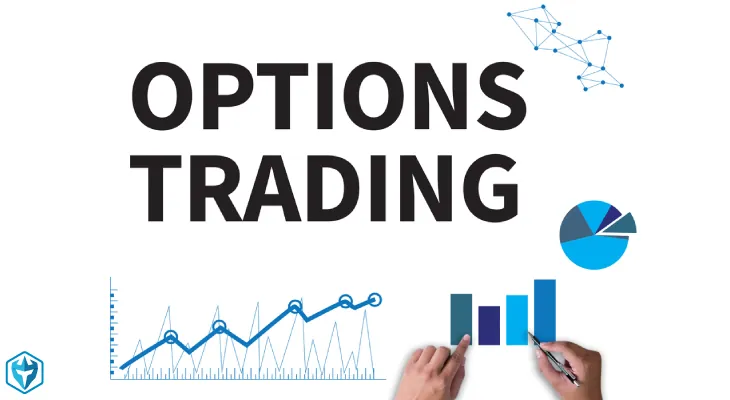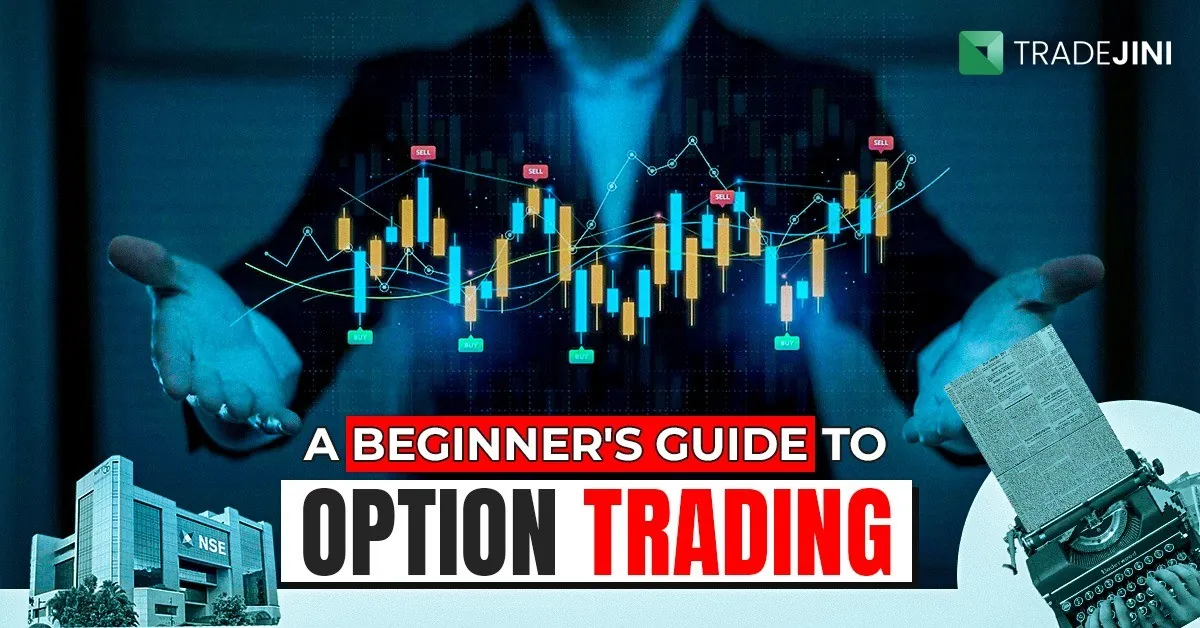Forget buying stocks directly! Think of it as contracts granting you the right (not compulsory) to buy or sell at a predetermined price by a certain date, which opens up unique strategies and limited risk but also demands understanding before you jump in. Indeed, this is option trading, which might sound complicated, but it's essentially a way to bet on future stock prices without actually buying the shares. Additionally, it is crucial to have a good grasp of financial analysis, market trends, and risk management. Understanding the factors that influence option pricing and the various strategies for trading options is also beneficial.
So, let us break down the option trading.
What is Option Trading?
Words like options and derivatives seem to be difficult to understand, but they are not as complicated as they appear.
Option trading is a derivative investment strategy involving the buying or selling of contracts that convey the right, but not the obligation, to buy or sell a specific underlying asset at a predetermined price on or before a specified date.

Getting Started with Option Trading
Before you start buying options, you need to understand the meaning and how the contracts work. Trading can be an incredibly lucrative activity, but it requires a deep understanding of the terminology and contracts involved.
Option trading is the most popular. It needs a deep understanding of the terminology and contracts involved. Option trading is growing more and more popular, yet it is still a complex practice, and those who need to take the time to understand it can face significant losses. Essentially, options allow traders to bet on whether they believe an asset will appreciate or depreciate. By buying or selling option contracts, investors can implement numerous strategies. Therefore, those wanting to get involved in option trading must take the time to learn the basics.
Option Trading: Your Flexible Choice in the Stock Market
In the Indian stock market, option trading offers you a unique way to navigate stock prices and strategically manage your investment risks. Think of them as flexible agreements that give you the right, but not the obligation, to buy or sell a specific stock at an agreed-upon price within a set timeframe.

Key concepts to know-
Call Options:
These act like reservations for buying a stock at a locked-in price (called the strike price) before a certain date (the expiration date). It's like securing a potential bargain if you anticipate the price rising.
Put Options:
These serve as insurance policies for your existing stocks. They allow you to sell those stocks at the strike price, even if the market value drops, protecting you from potential losses.
Essential Terms
Strike Price:
The predetermined price at which you can buy or sell the stock under the option agreement.
Expiration Date:
The final deadline for exercising your option rights. After this date, the option becomes invalid.
Premium:
The upfront cost you pay to acquire an option is similar to a reservation fee or insurance premium.
Intrinsic Value:
The immediate profit you'd make if you exercised the option today is calculated as the difference between the strike price and the current stock price.
In-the-Money (ITM):
An option that would be profitable to exercise right now, meaning it has intrinsic value.
Out-of-the-Money (OTM):
An option that wouldn't be profitable to exercise at the moment, lacking intrinsic value.
Remember: Options can be powerful tools for both speculation and risk management, but it's crucial to understand their mechanics and potential risks before utilizing them in your investment strategies.
How does Option Pricing Work?
For instance, you believe a company’s shares will rise in the next three months. Instead of buying shares directly, you buy a call option with a strike price of ₹1,500 and an expiration date of one month. This gives you the right to buy the company’s shares at ₹1,500, regardless of their actual price at the expiration date.
Breakdown of Options Premium (assuming the company’s current price is ₹1,400):
| Component | Value | Description |
| Intrinsic value | 0 | Since the current price (1400) is below the strike price, there is no immediate profit (1500) potential |
| Extrinsic value | 100 | Represents the value of time remaining (three months) and market volatility, influencing the options to become profitable before expiration |
| Total premium | 100 | The cost of acquiring the option contract |
Possible Scenarios
Now, if the company rises to ₹1,600 by expiration, you select the option, buy the company’s shares at ₹1,500, and sell them immediately for ₹1,600, earning a profit of ₹100 per share.
If the company remains below ₹1,500, the option expires worthless, and you lose the premium (₹100).
| Underlying Asset | Option call | Strike price | Expiration date | Premium | Intrinsic value | Extrinsic value |
| A company | Call | 1,500 | 1 month | 100 | 0 | 100 |
How does option trading work? (Call options and put options)
Unlike buying stocks, as mentioned earlier, options contracts give you the right, not the obligation, to buy or sell 100 shares of an asset. Think of it as a bet on the asset's future price, with limited risk. The only money you can lose is the premium (cost) you pay for the contract.
Now, what can you speculate on?
Will the price rise or fall?
How much will it change?
When will this happen?
Here, call and put options come into the picture, that are the financial contracts through which option trading works.
In call options, you profit if the price rises above your break-even point (premium + strike price). And then, either you sell the option or exercise it to buy the asset at the agreed price.
In put options, you profit if the price falls below your break-even point. You can then sell the option or exercise it to sell the asset at the agreed price.
If the price goes against you, you just let the option expire and lose only the premium.
| Underlying assets prices | When to buy and sell |
| Probability of increasing | Buy call option or sell put option |
| Probability of decreasing | Buy put option or sell call option |
Pros
| Option Buying | Option Selling |
| Control a larger asset with a smaller investment compared to buying the underlying asset directly | Collect premiums upfront, regardless of the underlying asset price movement |
| Your maximum loss is limited to the premium paid, even if the underlying asset price falls | Potentially profit from either direction (up or down) if the option expires worthless |
| Profit from both rising and falling prices by buying call or put options, respectively | Use existing assets to generate additional income |
| You don't need to predict the exact price movement, just the direction (up or down) | Sell options to hedge other holdings and create a safety net |
| Use put options to hedge other holdings against market downturns | Smaller capital commitment compared to buying options |
Cons
| Option Buying | Option Selling |
| Option value constantly decreases as it approaches expiration, even if the underlying asset price stays the same | If the underlying asset price moves significantly against your position, losses can be unlimited |
| The premium paid could have been used to invest in other assets with potentially higher returns | Can be obligated to buy or sell the underlying asset if exercised early |
| If the underlying asset price rises significantly, your profit is capped at the strike price minus the premium | Certain strategies require a margin account, increasing potential losses and interest charges |
| Some strategies require advanced knowledge and understanding of market dynamics | Risky in option selling as well as option buying |
How do I start Trading Options?
Open a trading account: To start trading, you must open an option trading account with an authorized broker.
Choose your strategy: Research different options, strategies, and underlying assets, understand the risks involved, and choose an option that aligns with your risk tolerance.
Make Your Move: At the end, pay the premium (cost of the option) and commission (to broker) to become the contract owner.



